Introduction
The SuperTrend AI Clustering indicator is a sophisticated evolution of the classic SuperTrend. This new approach combines the traditional logic of the SuperTrend with algorithmic evaluation techniques to deliver more precise and adaptive signals.
By computing multiple SuperTrends with varying parameters and using an intelligent clustering system, this indicator automatically selects the most effective configuration for the current market context, dynamically adjusting support and resistance levels. This makes it an especially useful tool for traders seeking a more refined trend analysis.
What is the SuperTrend AI Clustering?
The traditional SuperTrend is a trend-following indicator based on the average price and the Average True Range (ATR). It signals trend reversals when the price crosses above or below a dynamic support or resistance level calculated from the ATR.
The SuperTrend AI Clustering extends this logic in an innovative way. Instead of relying on a single ATR multiplier, it calculates multiple SuperTrends using different factors. It then evaluates the recent historical performance of each and groups them using a clustering method inspired by the k-means algorithm.
Finally, it automatically selects the most appropriate group based on the user’s preference (best performance, average, or worst), and builds the final SuperTrend using parameters from that group only.
How the Indicator Works
The entire process can be summarized in three stages:
- Multi-SuperTrend Generation
Several SuperTrends are calculated using different ATR multipliers (e.g., from 1 to 5 in 0.5 increments). - Evaluation and Clustering
Each SuperTrend is evaluated based on recent performance (measured by price movement) and grouped into one of three clusters: best, average, or worst performance. This grouping mimics a k-means algorithm. - Cluster Selection and Final SuperTrend Construction
The user selects which cluster to use for the final SuperTrend. This enables the indicator to adapt based on a more conservative, balanced, or aggressive trading approach.
Indicator Settings
Here are the customizable parameters available in the indicator:
- length: ATR length (default 10). Defines sensitivity of range calculation.
- minMult and maxMult: Range of ATR multipliers to evaluate.
- step: Increment between multipliers (e.g., 0.5 for 1.0, 1.5, 2.0…).
- perfAlpha: Performance memory used to smooth SuperTrend evaluations.
- fromCluster: Cluster to use for the final SuperTrend:
- 1 = Best performing
- 2 = Average
- 3 = Worst performing
- maxiter: Maximum number of iterations for the clustering algorithm.
- epsilon: Desired convergence precision for the algorithm.
These parameters allow the indicator to adapt its behavior based on the asset’s volatility or the trader’s style.
Interpretation and Trading Use
The signals generated by SuperTrend AI Clustering can be used for trend reversal indications or to confirm entry and exit points:
- Bullish trend change: when the price crosses above the SuperTrend level.
- Bearish trend change: when the price crosses below the SuperTrend level.
- Color and transparency: the indicator changes color and opacity depending on trend changes, making it easier to identify key market shifts.
This adaptive approach represents a significant improvement over the traditional SuperTrend by dynamically adjusting its responsiveness to market conditions. (original code from LuxAlgo).
SuperTrend AI Clustering Code (ProBuilder)
|
1 2 3 4 5 6 7 8 9 10 11 12 13 14 15 16 17 18 19 20 21 22 23 24 25 26 27 28 29 30 31 32 33 34 35 36 37 38 39 40 41 42 43 44 45 46 47 48 49 50 51 52 53 54 55 56 57 58 59 60 61 62 63 64 65 66 67 68 69 70 71 72 73 74 75 76 77 78 79 80 81 82 83 84 85 86 87 88 89 90 91 92 93 94 95 96 97 98 99 100 101 102 103 104 105 106 107 108 109 110 111 112 113 114 115 116 117 118 119 120 121 122 123 124 125 126 127 128 129 130 131 132 133 134 135 136 137 138 139 140 141 142 143 144 145 146 147 148 149 150 151 152 153 154 155 156 157 158 159 160 161 162 163 164 165 166 167 168 169 170 171 172 173 174 175 176 177 178 179 180 181 182 183 184 185 186 187 188 189 190 191 192 193 194 195 196 197 198 199 200 201 202 203 204 205 206 207 208 209 210 211 212 213 214 215 216 217 218 219 220 221 222 223 224 225 226 227 228 229 230 231 232 233 234 235 236 237 238 239 240 241 242 243 244 245 246 247 248 249 250 251 252 253 254 255 256 257 258 259 260 261 262 263 264 265 266 267 268 269 270 271 272 273 274 275 276 277 278 279 280 281 282 283 284 285 286 287 288 289 290 291 292 293 294 295 296 297 298 299 300 301 302 303 304 305 306 307 308 309 310 311 312 313 314 315 316 317 318 319 320 321 322 323 324 325 326 327 328 329 330 |
//---------------------------------------------------------------// //SuperTrend AI Clustering //version = 2 //02.06.2025 //Iván González @ www.prorealcode.com //Sharing ProRealTime knowledge //---------------------------------------------------------------// //-----Inputs----------------------------------------------------// //---------------------------------------------------------------// //length=10 // ATR length //minMult=1 //maxMult=5 //step=0.5 //perfAlpha=10 // Performance memory //fromCluster=1 // 1=best 2=average 3=worst maxiter=10 // Número máximo de iteraciones de clustering epsilon=0.0001 // Precisión para simular convergencia //---------------------------------------------------------------// //-----Average True Range----------------------------------------// //---------------------------------------------------------------// atr=averagetruerange[length](close) //---------------------------------------------------------------// //-----Supertrend cálculo múltiple-------------------------------// //---------------------------------------------------------------// $holderUpper[0]=(high+low)/2 $holderLower[0]=(high+low)/2 k=0 for factor=0 to floor((maxMult-minMult)/step) do up=(high+low)/2+atr*factor dn=(high+low)/2-atr*factor if close > $holderUpper[k] then $holderTrend[k]=1 elsif close < $holderUpper[k] then $holderTrend[k]=0 else $holderTrend[k]=$holderTrend[k] endif if close[1]<$holderUpper[k] then $holderUpper[k]=min(up,$holderUpper[k]) else $holderUpper[k]=up endif if close[1]>$holderLower[k] then $holderLower[k]=max(dn,$holderLower[k]) else $holderLower[k]=dn endif if (close[1]-$holderOutput[k])>0 then diff=1 elsif (close[1]-$holderOutput[k])<0 then diff=-1 else diff=0 endif $holderPerf[k]=$holderPerf[max(0,k-1)]+2/(perfAlpha+1)*((close-close[1])*diff-$holderPerf[max(0,k-1)]) if $holderTrend[k]=1 then $holderOutput[k]=$holderLower[k] else $holderOutput[k]=$holderUpper[k] endif $holderFactor[k] = (minMult+k*step) k=k+1 next //---------------------------------------------------------------// //-----K-means con convergencia----------------------------------// //---------------------------------------------------------------// centroid1 = 0 centroid2 = 0 centroid3 = 0 count = k FOR i = 0 TO count - 1 DO IF i < count / 3 THEN centroid1 = centroid1 + $holderPerf[i] ELSIF i < 2 * count / 3 THEN centroid2 = centroid2 + $holderPerf[i] ELSE centroid3 = centroid3 + $holderPerf[i] ENDIF NEXT centroid1 = centroid1 / (count / 3) centroid2 = centroid2 / (count / 3) centroid3 = centroid3 / (count / 3) converged = 0 iter = 0 WHILE iter < maxiter AND converged = 0 DO old1 = centroid1 old2 = centroid2 old3 = centroid3 $cluster1Perf[0] = 0 $cluster2Perf[0] = 0 $cluster3Perf[0] = 0 $cluster1Factors[0] = 0 $cluster2Factors[0] = 0 $cluster3Factors[0] = 0 FOR i = 0 TO count - 1 DO dist1 = abs($holderPerf[i] - centroid1) dist2 = abs($holderPerf[i] - centroid2) dist3 = abs($holderPerf[i] - centroid3) IF dist1 <= dist2 AND dist1 <= dist3 THEN $cluster1Perf[$cluster1Perf[0]+1] = $holderPerf[i] $cluster1Factors[$cluster1Factors[0]+1] = $holderFactor[i] $cluster1Perf[0] = $cluster1Perf[0] + 1 $cluster1Factors[0] = $cluster1Factors[0] + 1 ELSIF dist2 <= dist1 AND dist2 <= dist3 THEN $cluster2Perf[$cluster2Perf[0]+1] = $holderPerf[i] $cluster2Factors[$cluster2Factors[0]+1] = $holderFactor[i] $cluster2Perf[0] = $cluster2Perf[0] + 1 $cluster2Factors[0] = $cluster2Factors[0] + 1 ELSE $cluster3Perf[$cluster3Perf[0]+1] = $holderPerf[i] $cluster3Factors[$cluster3Factors[0]+1] = $holderFactor[i] $cluster3Perf[0] = $cluster3Perf[0] + 1 $cluster3Factors[0] = $cluster3Factors[0] + 1 ENDIF NEXT centroid1 = 0 centroid2 = 0 centroid3 = 0 IF $cluster1Perf[0] > 0 THEN FOR i = 1 TO $cluster1Perf[0] DO centroid1 = centroid1 + $cluster1Perf[i] NEXT centroid1 = centroid1 / $cluster1Perf[0] ENDIF IF $cluster2Perf[0] > 0 THEN FOR i = 1 TO $cluster2Perf[0] DO centroid2 = centroid2 + $cluster2Perf[i] NEXT centroid2 = centroid2 / $cluster2Perf[0] ENDIF IF $cluster3Perf[0] > 0 THEN FOR i = 1 TO $cluster3Perf[0] DO centroid3 = centroid3 + $cluster3Perf[i] NEXT centroid3 = centroid3 / $cluster3Perf[0] ENDIF IF abs(centroid1 - old1) < epsilon AND abs(centroid2 - old2) < epsilon AND abs(centroid3 - old3) < epsilon THEN converged = 1 ENDIF iter = iter + 1 WEND //---------------------------------------------------------------// //-----Cluster seleccionado y nuevo Supertrend-------------------// //---------------------------------------------------------------// finalFactor = 0 finalPerf = 0 perf = 0 fact = 0 IF fromCluster = 1 THEN // Best IF centroid1 > max(centroid2, centroid3) THEN FOR j = 1 TO lastset($cluster1Perf) DO perf = perf + $cluster1Perf[j] fact = fact + $cluster1Factors[j] NEXT finalFactor = fact / lastset($cluster1Factors) if lastset($cluster1Perf) > 0 then finalPerf = perf / lastset($cluster1Perf) else finalPerf = 0 endif ELSIF centroid2 > max(centroid1, centroid3) THEN FOR j = 1 TO lastset($cluster2Perf) DO perf = perf + $cluster2Perf[j] fact = fact + $cluster2Factors[j] NEXT finalFactor = fact / lastset($cluster2Factors) if lastset($cluster2Perf) > 0 then finalPerf = perf / lastset($cluster2Perf) else finalPerf = 0 endif ELSE FOR j = 1 TO lastset($cluster3Perf) DO perf = perf + $cluster3Perf[j] fact = fact + $cluster3Factors[j] NEXT finalFactor = fact / lastset($cluster3Factors) if lastset($cluster3Perf) > 0 then finalPerf = perf / lastset($cluster3Perf) else finalPerf = 0 endif ENDIF ELSIF fromCluster = 2 THEN // Average IF centroid1 > centroid2 AND centroid1 < centroid3 THEN FOR j = 1 TO lastset($cluster1Perf) DO perf = perf + $cluster1Perf[j] fact = fact + $cluster1Factors[j] NEXT finalFactor = fact / lastset($cluster1Factors) if lastset($cluster1Perf) > 0 then finalPerf = perf / lastset($cluster1Perf) else finalPerf = 0 endif ELSIF centroid2 > centroid1 AND centroid2 < centroid3 THEN FOR j = 1 TO lastset($cluster2Perf) DO perf = perf + $cluster2Perf[j] fact = fact + $cluster2Factors[j] NEXT finalFactor = fact / lastset($cluster2Factors) if lastset($cluster2Perf) > 0 then finalPerf = perf / lastset($cluster2Perf) else finalPerf = 0 endif ELSE FOR j = 1 TO lastset($cluster3Perf) DO perf = perf + $cluster3Perf[j] fact = fact + $cluster3Factors[j] NEXT finalFactor = fact / lastset($cluster3Factors) if lastset($cluster3Perf) > 0 then finalPerf = perf / lastset($cluster3Perf) else finalPerf = 0 endif ENDIF ELSIF fromCluster = 3 THEN // Worst IF centroid1 < min(centroid2, centroid3) THEN FOR j = 1 TO lastset($cluster1Perf) DO perf = perf + $cluster1Perf[j] fact = fact + $cluster1Factors[j] NEXT finalFactor = fact / lastset($cluster1Factors) if lastset($cluster1Perf) > 0 then finalPerf = perf / lastset($cluster1Perf) else finalPerf = 0 endif ELSIF centroid2 < min(centroid1, centroid3) THEN FOR j = 1 TO lastset($cluster2Perf) DO perf = perf + $cluster2Perf[j] fact = fact + $cluster2Factors[j] NEXT finalFactor = fact / lastset($cluster2Factors) if lastset($cluster2Perf) > 0 then finalPerf = perf / lastset($cluster2Perf) else finalPerf = 0 endif ELSE FOR j = 1 TO lastset($cluster3Perf) DO perf = perf + $cluster3Perf[j] fact = fact + $cluster3Factors[j] NEXT finalFactor = fact / lastset($cluster3Factors) if lastset($cluster3Perf) > 0 then finalPerf = perf / lastset($cluster3Perf) else finalPerf = 0 endif ENDIF ENDIF //---------------------------------------------------------------// //-----Renderizado final del Supertrend--------------------------// //---------------------------------------------------------------// newup = (high + low) / 2 + atr * finalFactor newdown = (high + low) / 2 - atr * finalFactor if close[1] < newupper then newupper = min(newup, newupper) else newupper = newup endif if close[1] > newlower then newlower = max(newdown, newlower) else newlower = newdown endif if close > newupper then newOS = 1 elsif close < newlower then newOS = 0 else newOS = newOS endif if newOS and newOS[1]=0 then newST = newlower r = 0 g = 255 transp=0 elsif newOS then newST = newlower r = 0 g = 255 transp=255 elsif newOS=0 and newOS[1] then newST = newupper r = 255 g = 0 transp=0 else newST = newupper r = 255 g = 0 transp=255 endif //---------------------------------------------------------------// return newST style(line,2) coloured(r,g,0,transp) |
Share this
No information on this site is investment advice or a solicitation to buy or sell any financial instrument. Past performance is not indicative of future results. Trading may expose you to risk of loss greater than your deposits and is only suitable for experienced investors who have sufficient financial means to bear such risk.
ProRealTime ITF files and other attachments :PRC is also on YouTube, subscribe to our channel for exclusive content and tutorials
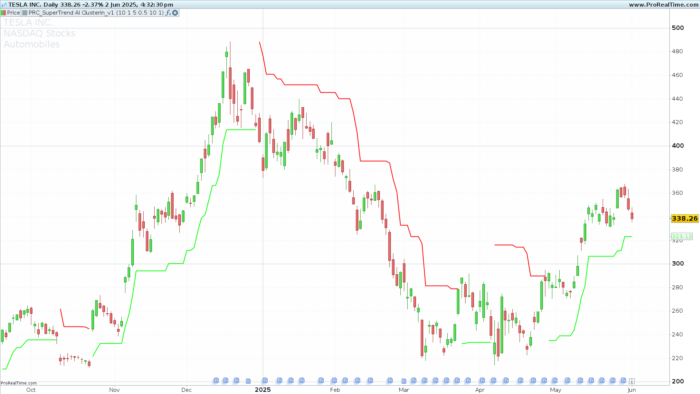

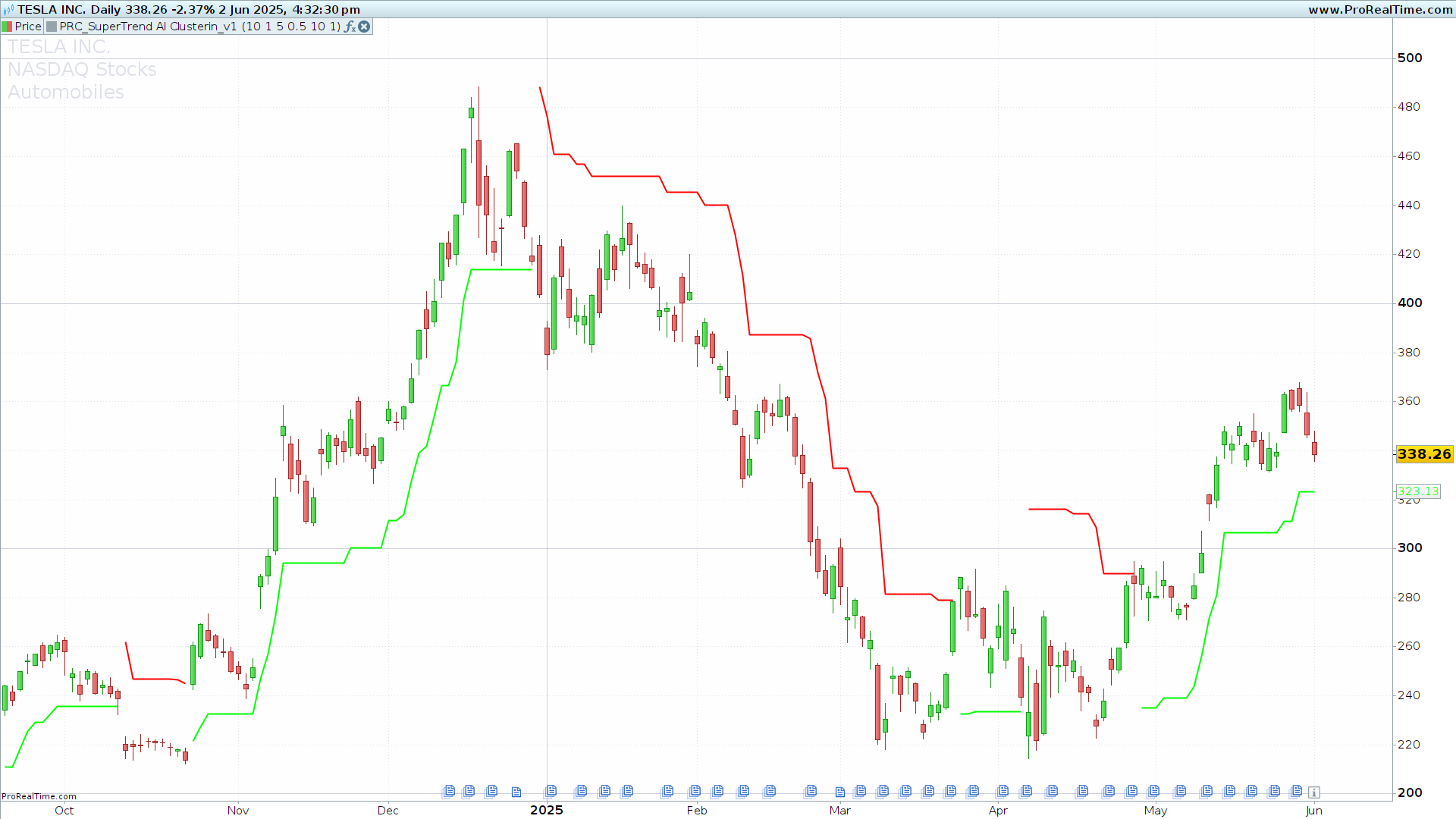
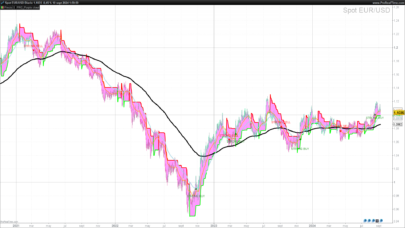
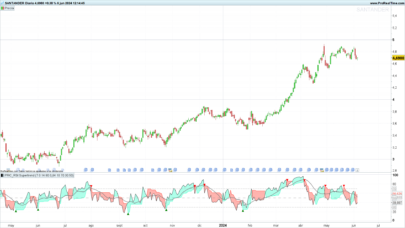
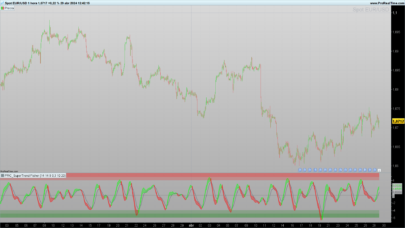
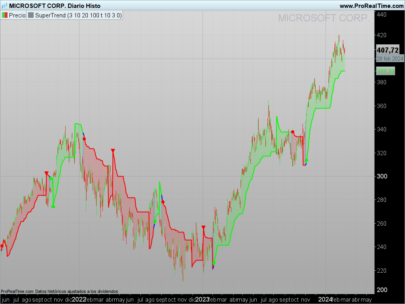
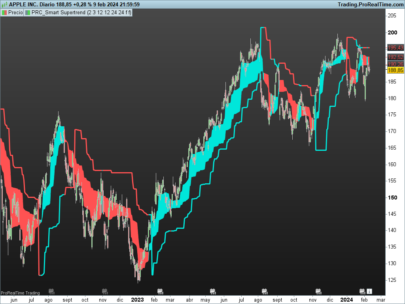
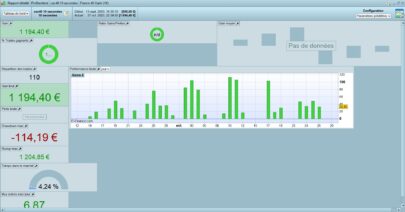
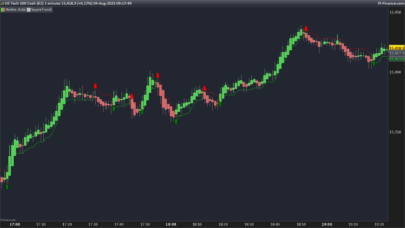
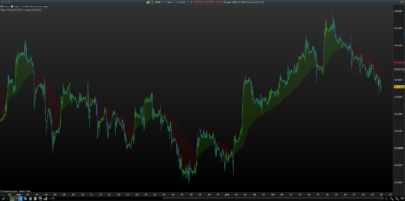
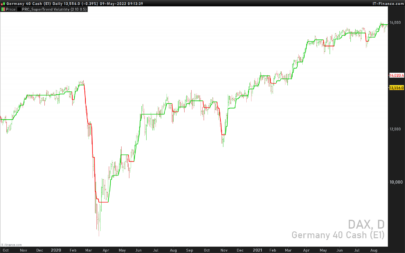
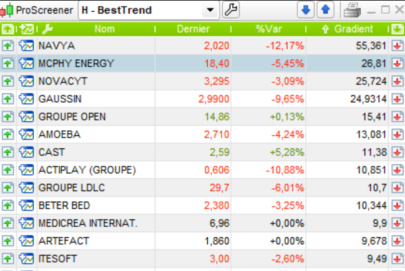
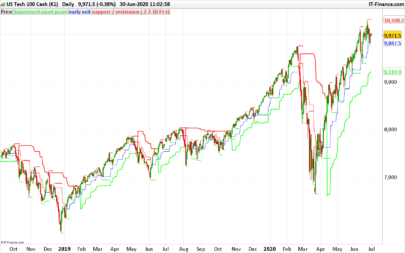
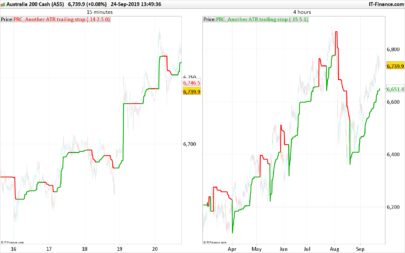
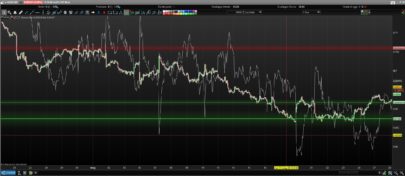
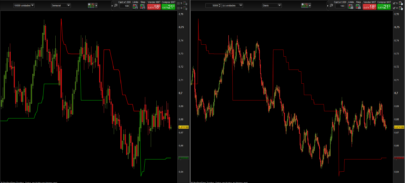
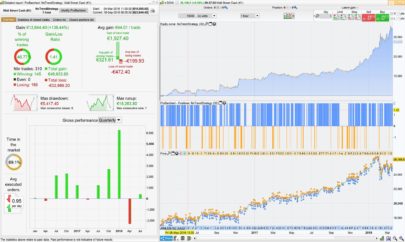
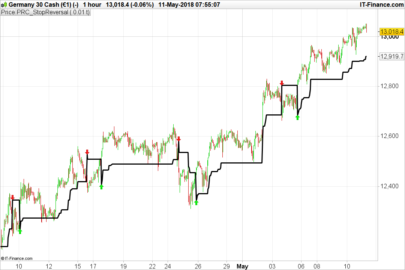
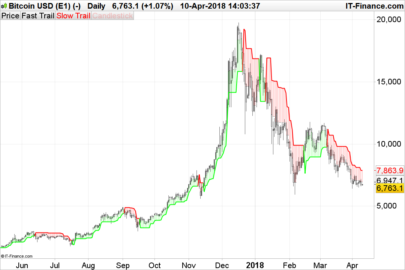
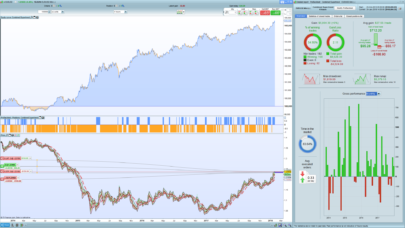

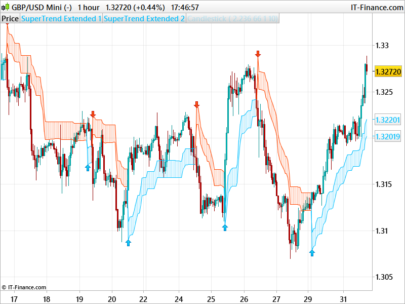
Great work Ivan. Thanks
thank
bravo!